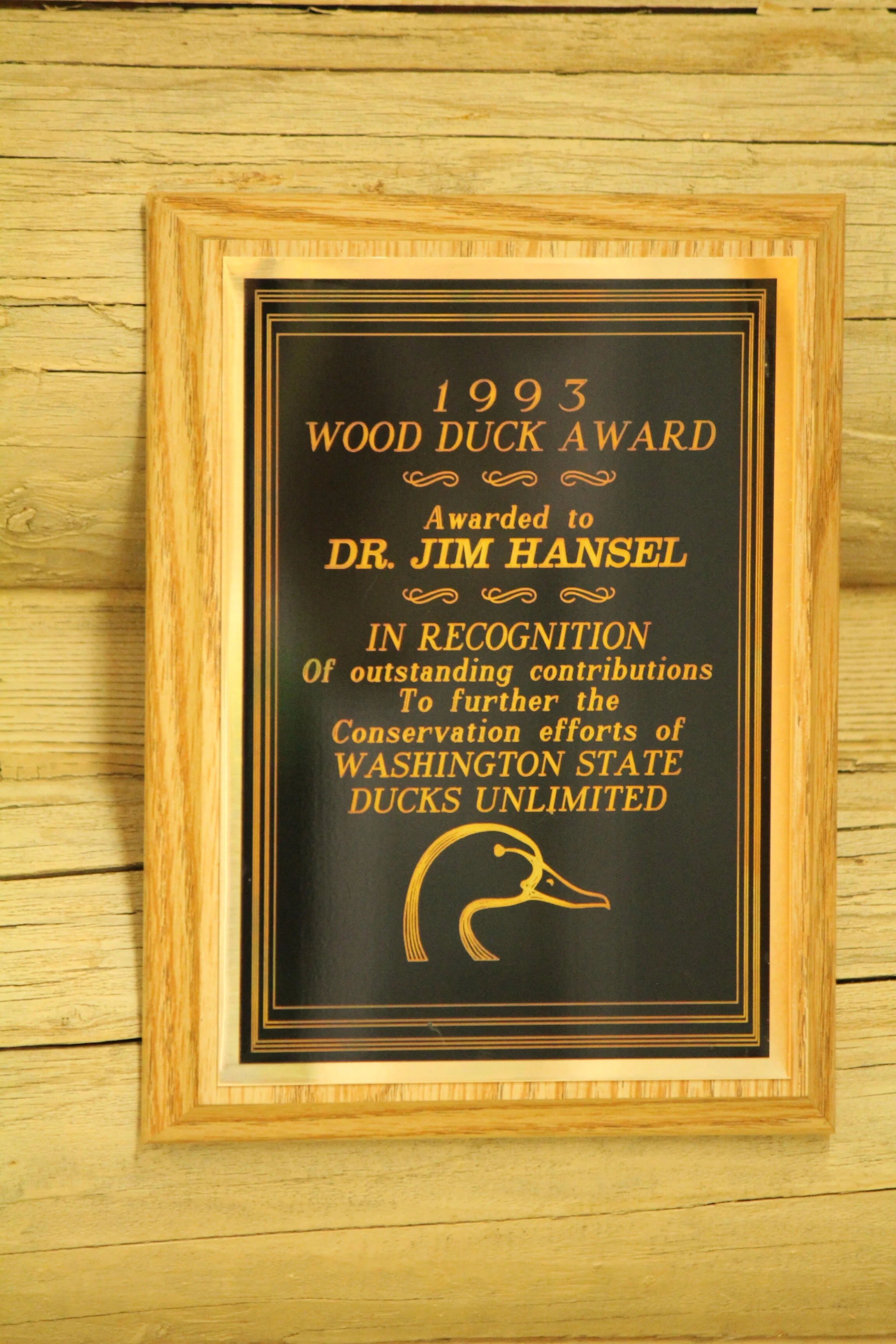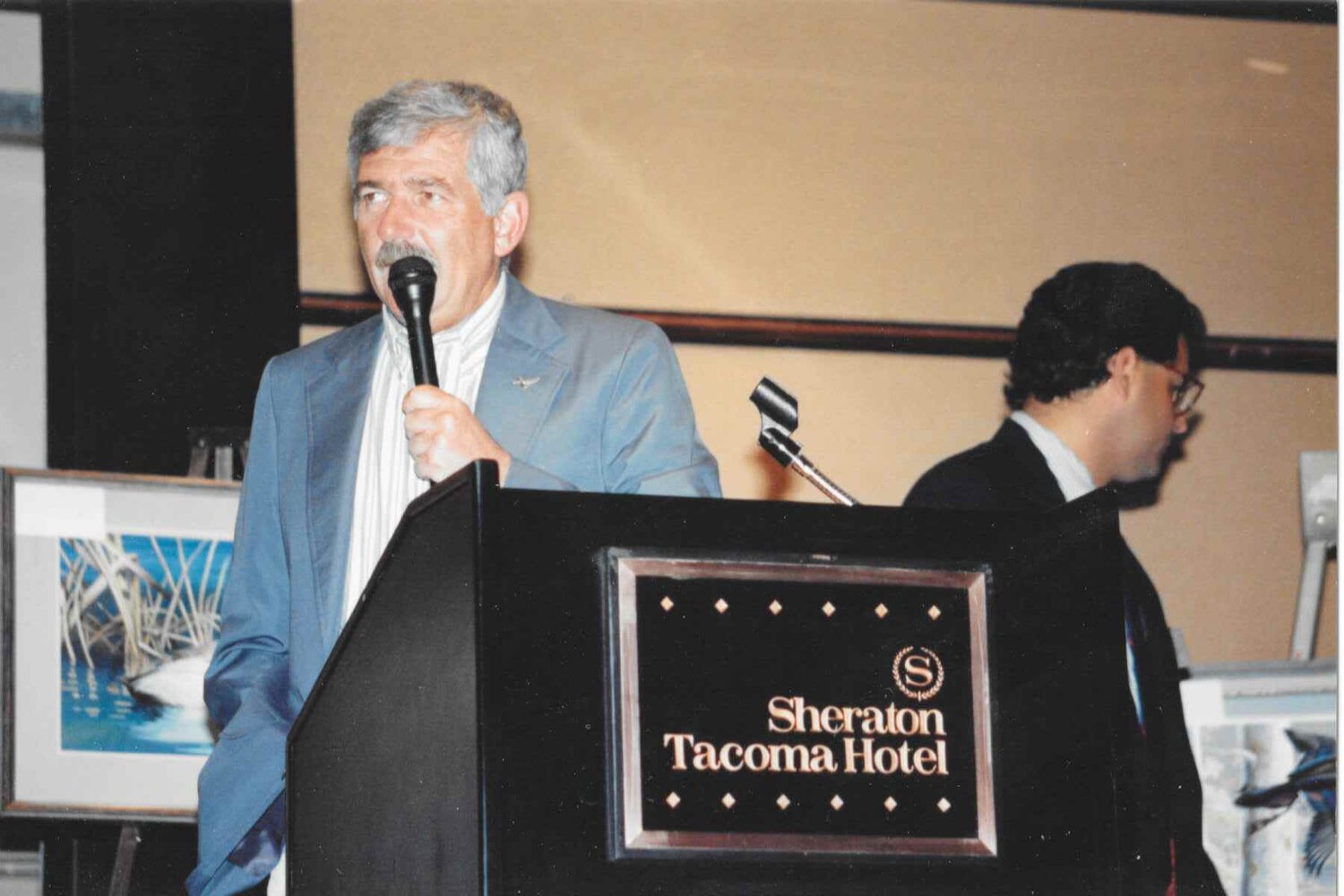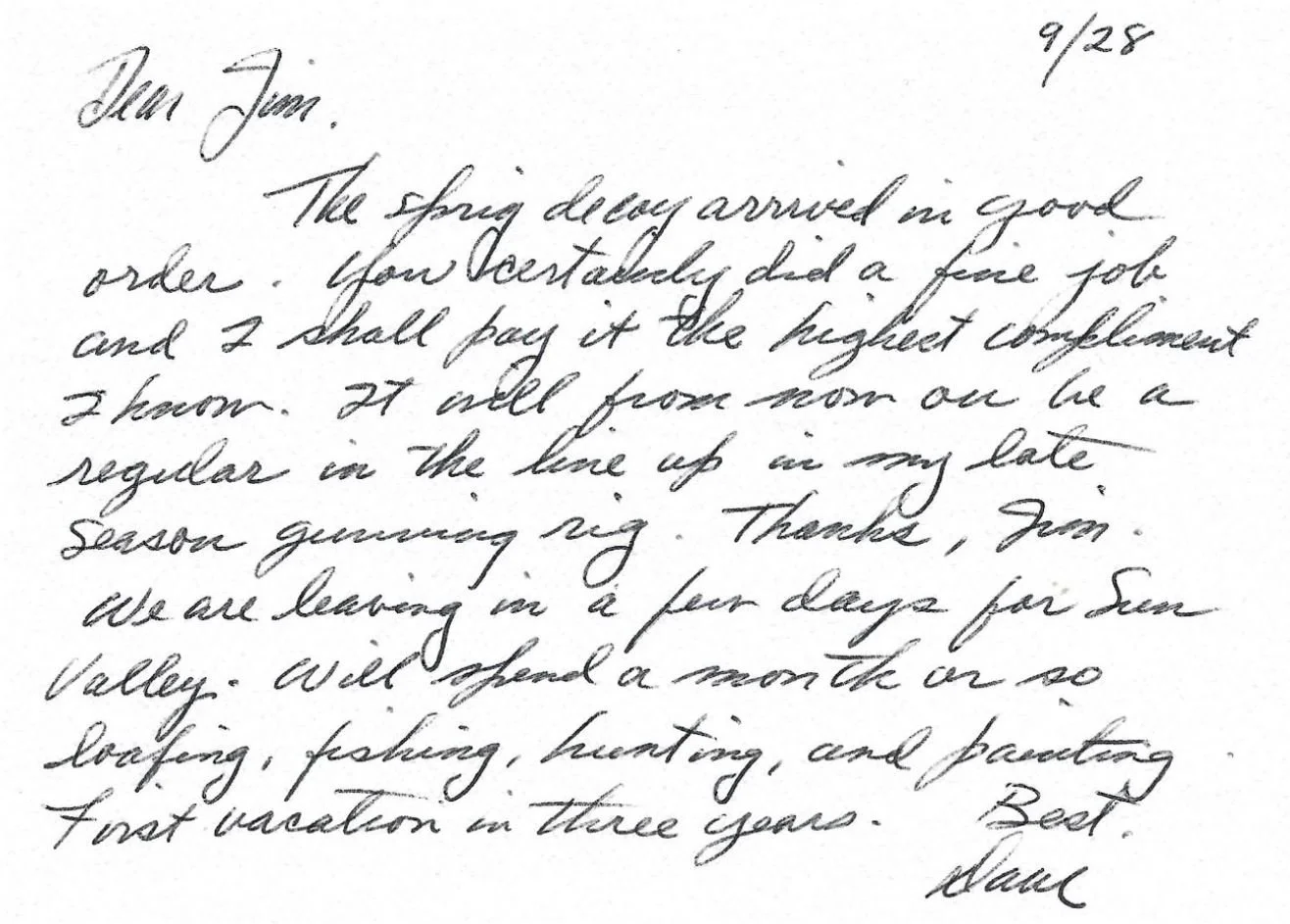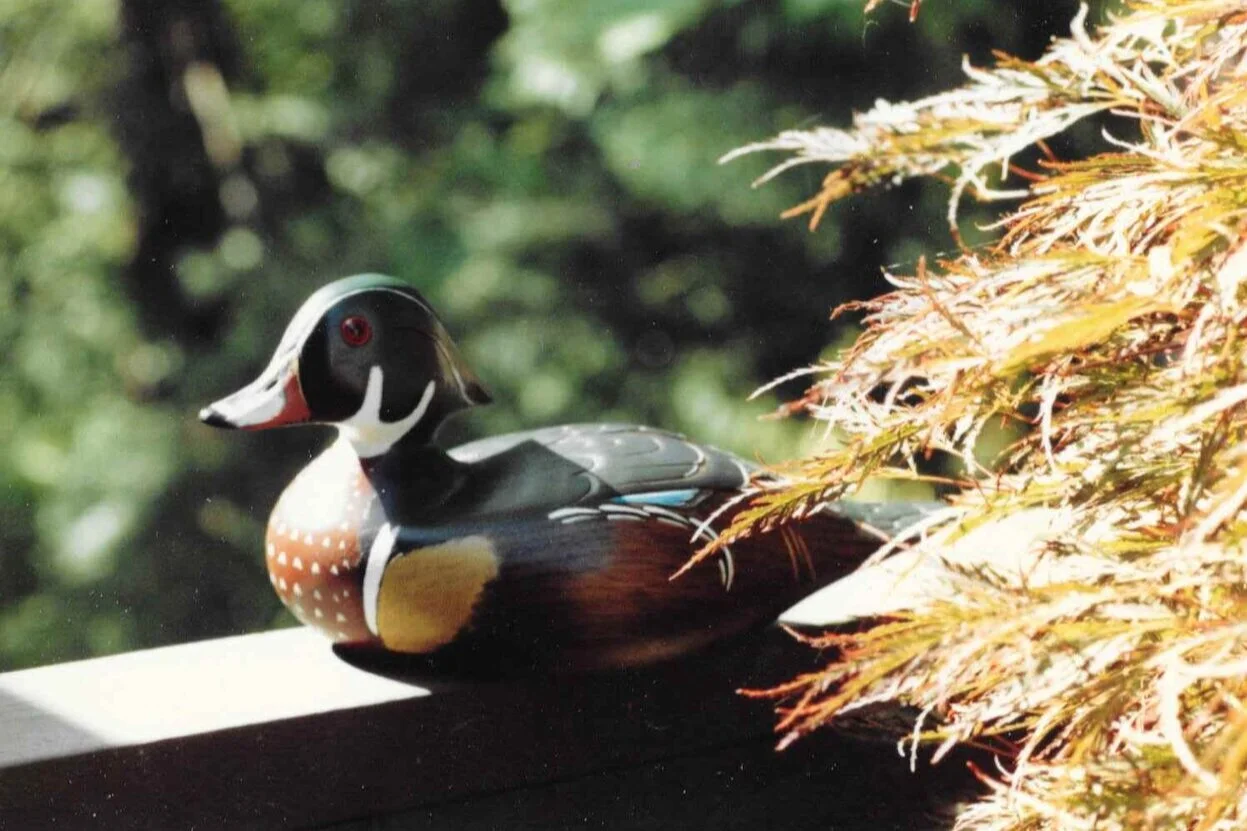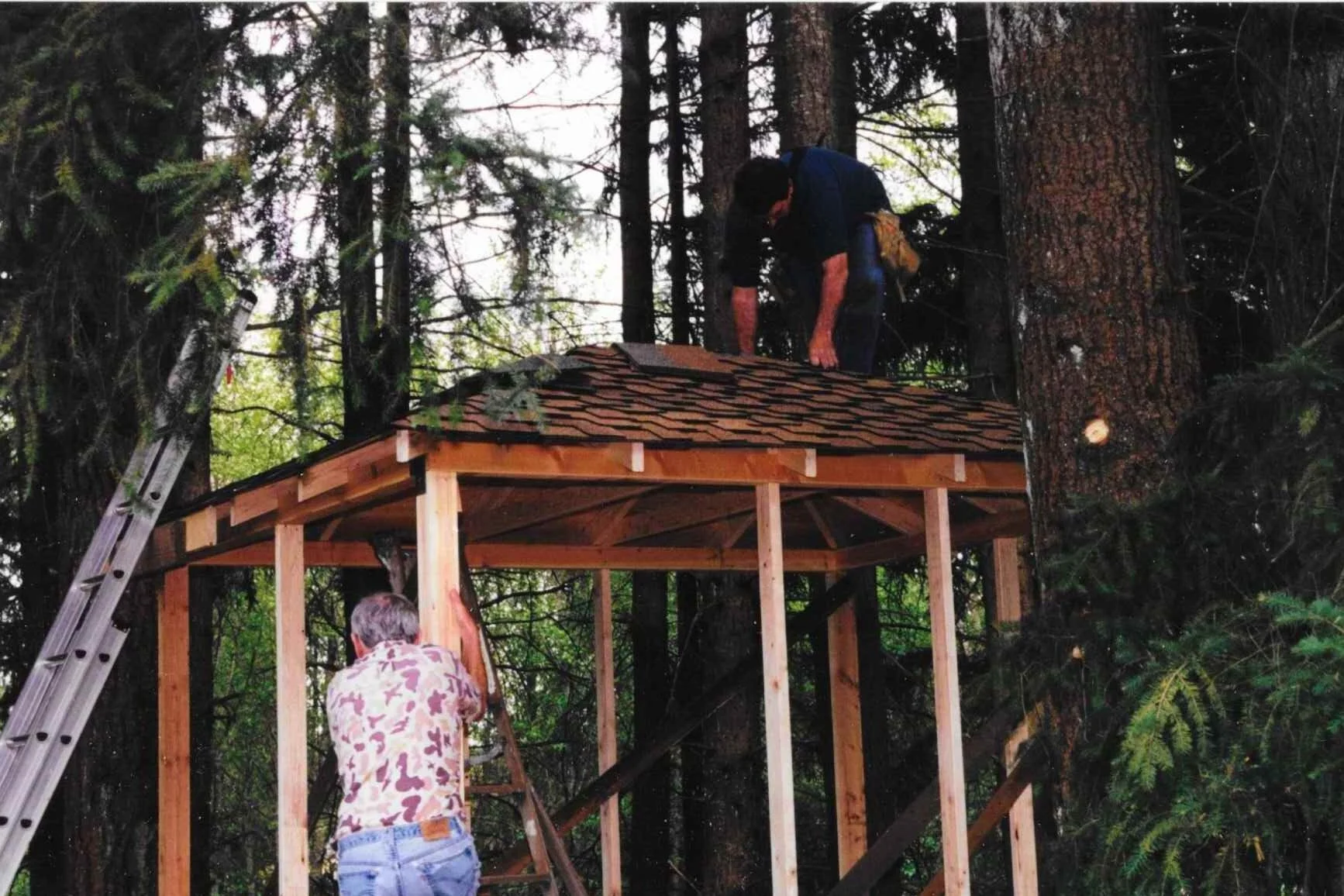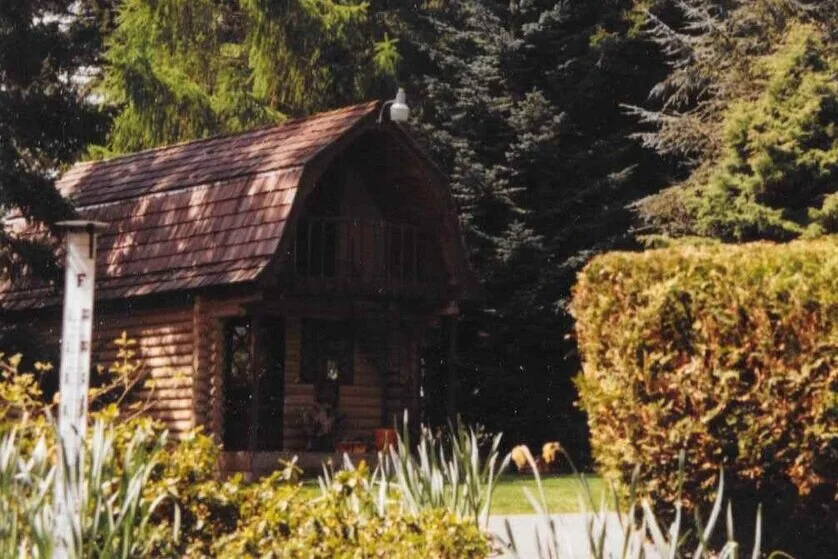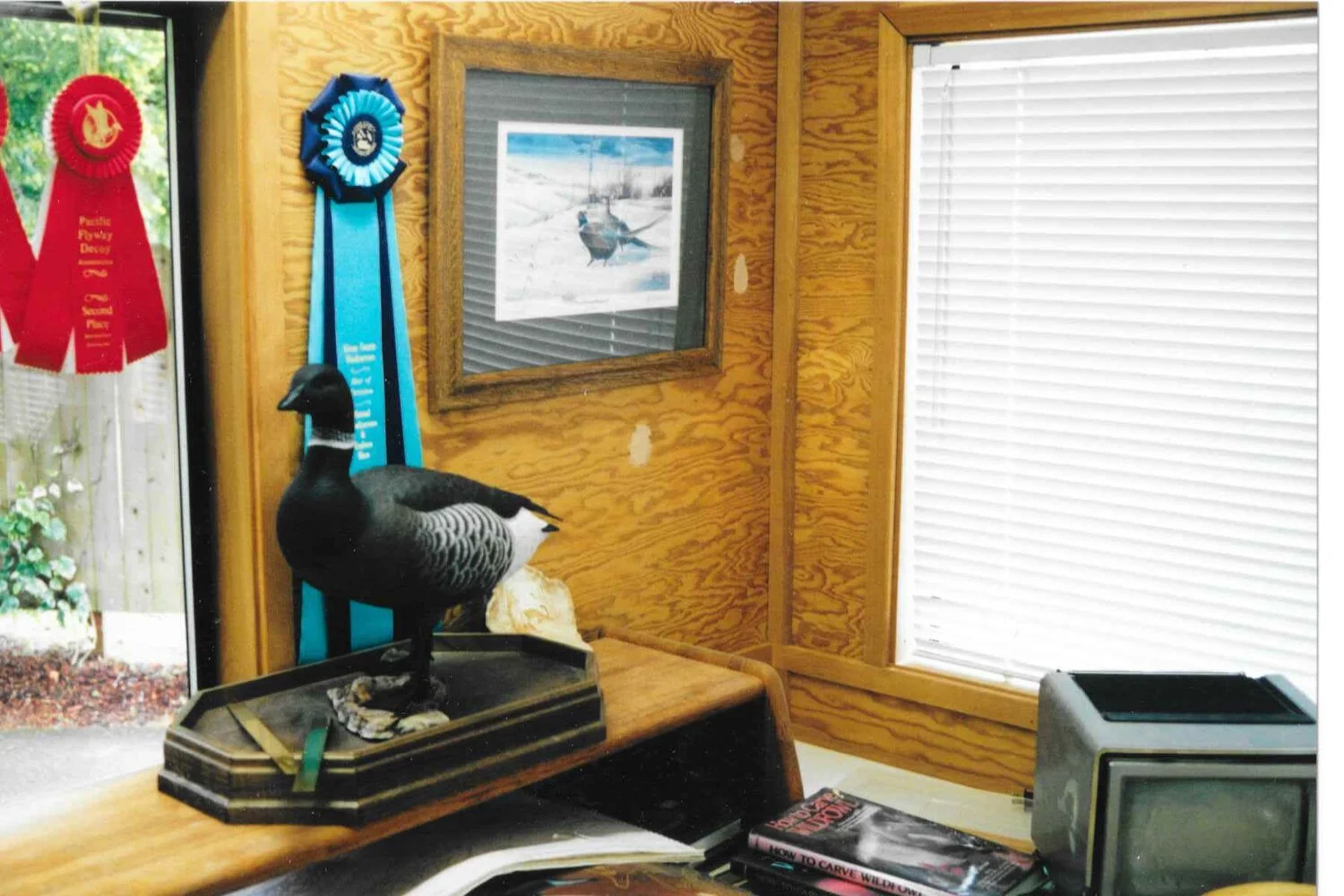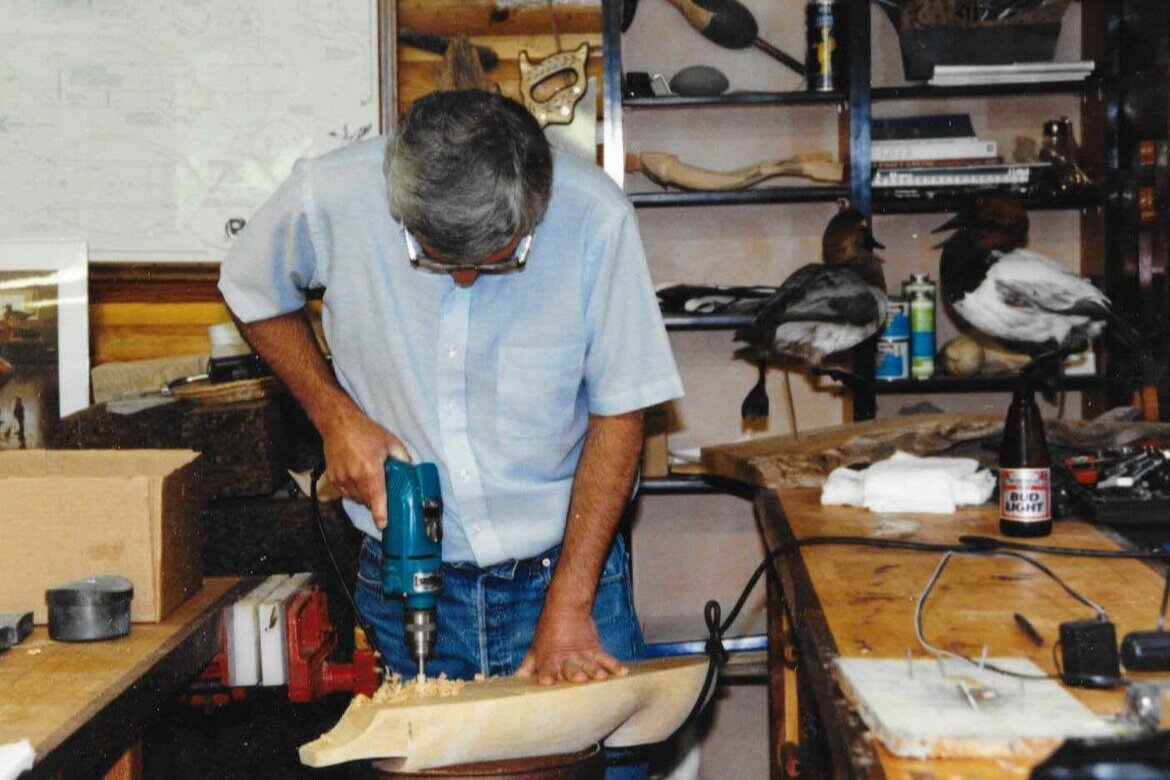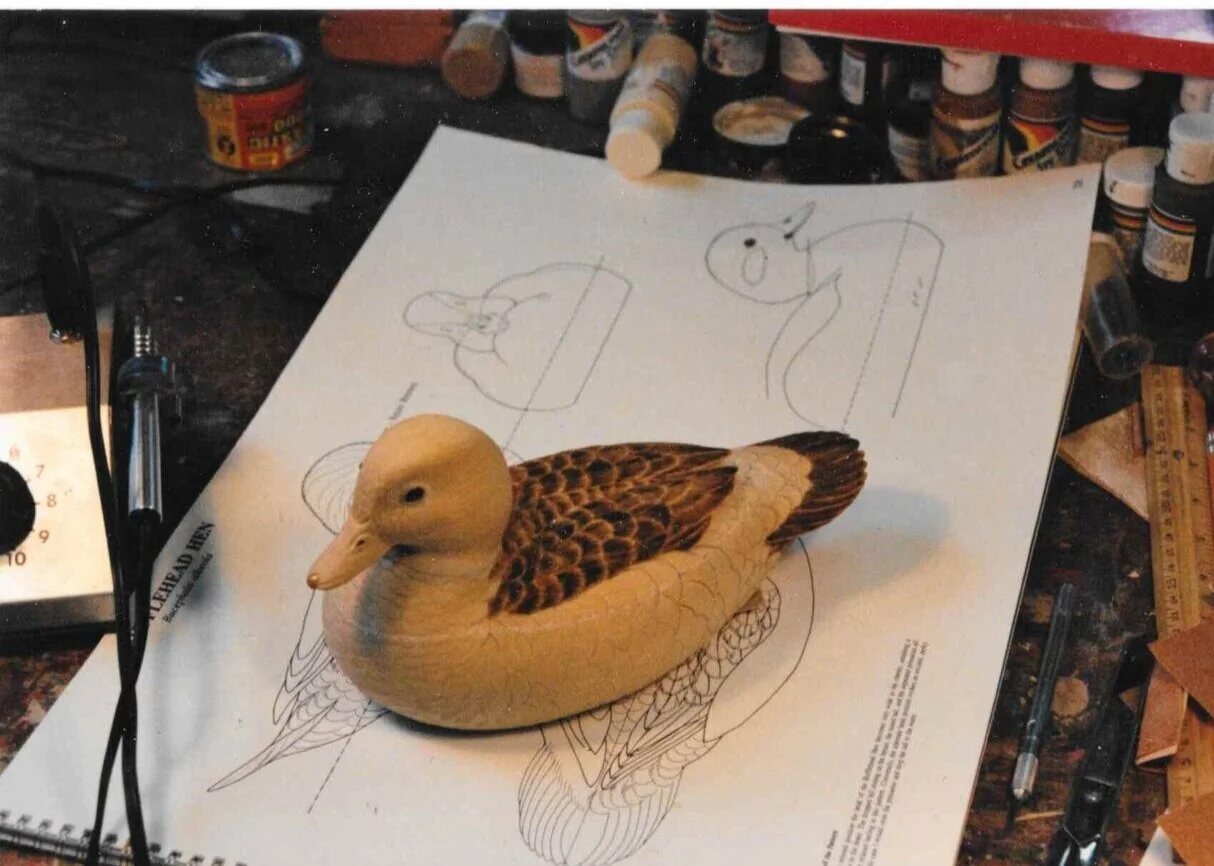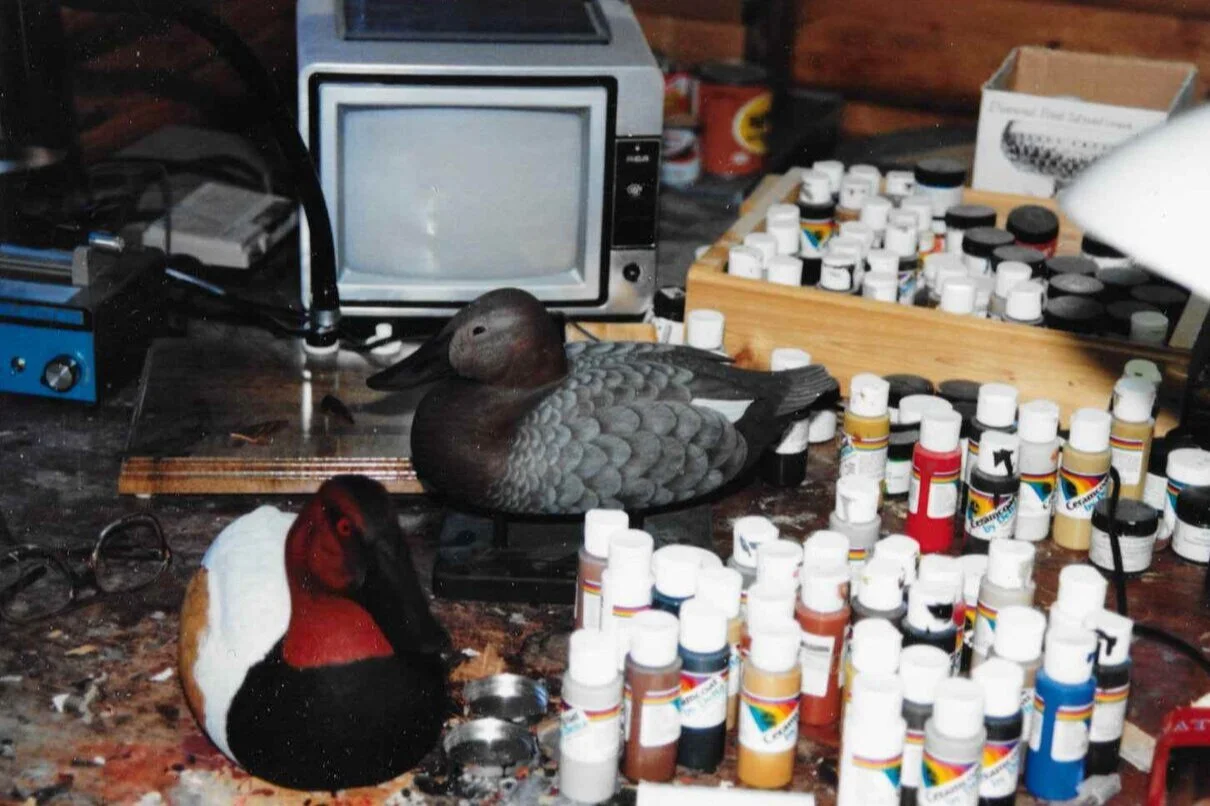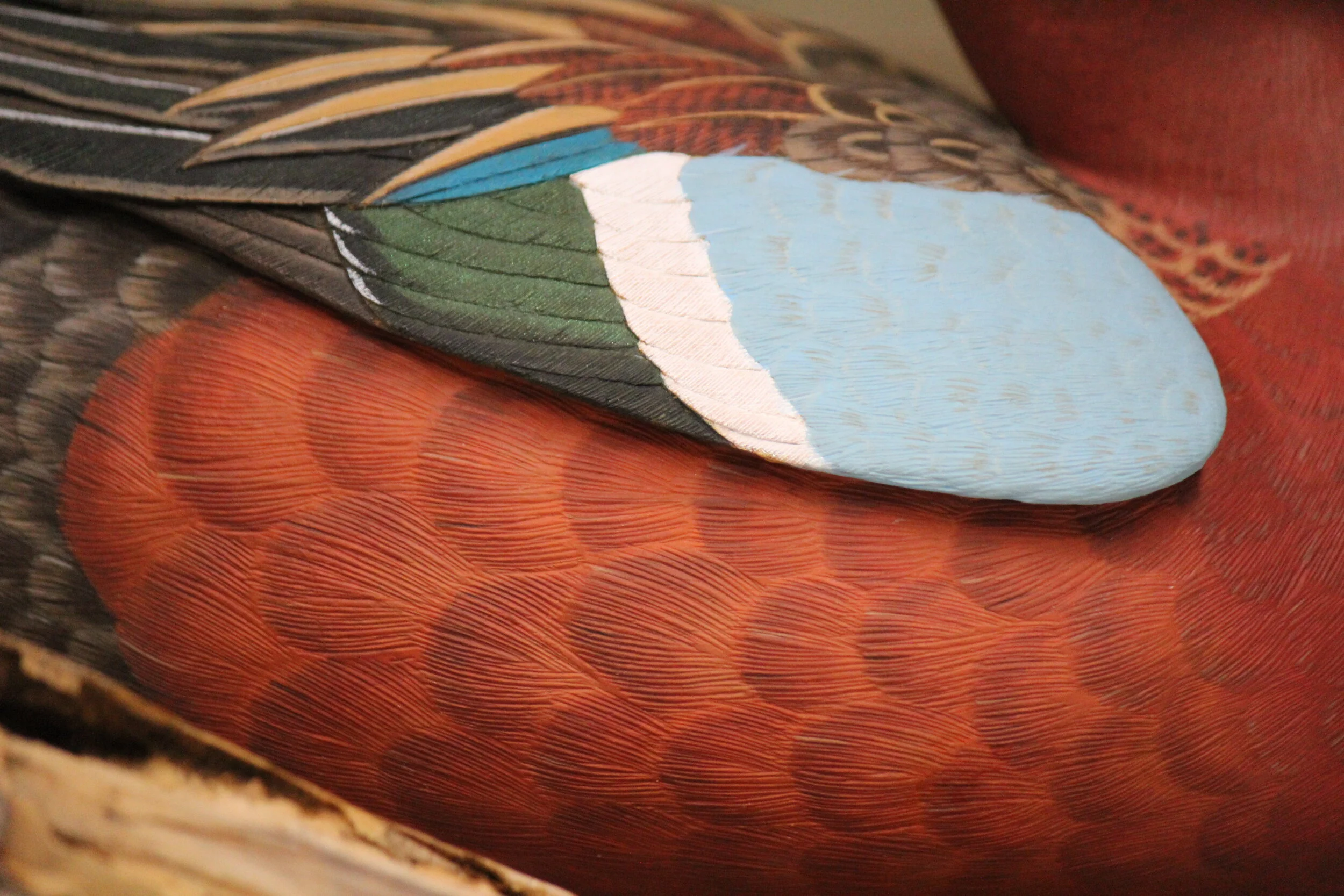James Robert Hansel
January 8th, 1940—September 7th, 2018
A Path To Carving
Dr. Hansel began carving when he was just eleven years old, but his woodworking skills would not garner international attention until he reached his 60s. After stepping into retirement and away from his successful orthodontics practice he decided it was time to see where his carving prowess could take him. A lifelong outdoorsman, James sought a creative outlet he could use to maintain his sacred relationship with nature. When he started working on waterfowl, he didn’t know it was the answer he had been looking for. His artwork would soon help define what it means to be a master of your craft.
Hobby Turned Passion
Early in his carving career, James would sand the pieces in front of the television set inside his family’s log cabin house while his wife, Jean, would kindly vacuum up the wood chippings. Space quickly became an issue so with inspiration from his family, he built his own woodshop just a few hundred feet in front of their home.
Inside the shop there were two rooms. A big front room where he carved his birds from the lifetime supply of gelutong and sugar pine wood he purchased for $1,000. The smaller backroom was devoted to painting, his favorite part of the whole process. James often joked that the reason he became a carver was so he could become a professional painter. The most challenging part of the process was creating one concept out of the infinite possibilities. At the conceptual phase there are so many questions that need addressed. What bird? Which gender? What age? Which position? Which plumage? As things slowly come together a vision is born, and the preliminary engineering phase begins. After this, James dedicated most of the creative time to carving and painting.
The Process
Engineering
The most tedious part of the project is the engineering process. With a background in dentistry and the sciences, James would admit he had an edge on most carvers. His expertise with power tools shaped his non-traditional approach to carving and helped him master the functionality of his working decoys necessary for competition. The engineering boils down to drawing a pattern on two sides of a wood block, carving the outline with a band saw and grinding away all the wood that is not bird. Every decoy is hollow and self-righting with weighted keels.
Carving
This stage marks the start of fine detail additions. James would use several electric woodcarving tools to perfect the bird’s shape and create individual feathers. He would also use a wood burning tool to etch in the hair-fine parallel lines creating a level of realism rarely seen. Carving and painting a single duck can require up to 5 months of full attention. James admits he typically worked for less than minimum wage even with a price of $5,000 per bird. However, money was never on the mind of Dr. Hansel while carving. His rewards were the intellectual challenges that came with it and the ample opportunities to compete and succeed in world-class competition.
Painting
To James, the acrylic paint brings the bare wood to life and adds a defining layer of artistry to his birds. Maintaining perfect life-like quality in all his work is a challenge because every bird is different. Feathers come in a dizzying array of colors, patterns and sizes. Capturing the subtle shadings from one color to another is a slow and meticulous process and a challenge James treasured. A black duck, for example, appears to be one solid shade from afar, but when you look at the same duck closely, you see there are five different colors on a feather. As a result, his painted decoys and decorative birds are arguably the most intricate and detail-oriented carvings on the market.
Legacy & Impact
Carved over 1,000 birds since 1985
Organized 1st Washington state Carver of the Year contest
7-time Washington State Carver of the Year
Qualified 10+ Decoys at IWCA shows for international competition
Brant of the year in Canadian “Brant Festival”
Regularly showcased at Eddie Bauer Wildlife & Art Exhibits
Carved every North American waterfowl pair
Area chairman for Ducks Unlimited in 1981 & 1982
Area chairman of the year in 1981
Washington State Ducks Unlimited sponsor chairman
Ducks Unlimited trustee and life sponsor
Donated more than 100 birds to Ducks Unlimited
Raised over $150,000 in total for Ducks Unlimited
